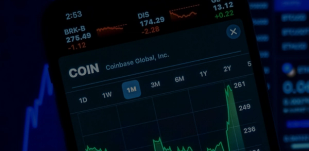
How to Pay International Suppliers & Vendors and Maximise Profits
International business transactions come with plenty of benefits, such as:
- Securing supplies at a cheaper cost
- Expanding your target market
- Sourcing locally unavailable materials
However, international businesses can also have significant supply chain bottlenecks if payments aren’t handled well. Plus, issues of transaction costs and foreign exchange risks can weigh down your profits.
Consequently, it’s imperative to understand how to pay overseas suppliers efficiently and at a reasonable cost to ensure your business stays afloat.
What to Consider When Making International Payments
Determine the Transaction Currency
To avoid delays in payment processing, it’s critical to be on the same page with the suppliers about the transaction currency.
You will typically denominate the invoice in either the vendor’s or your local currency when paying international vendors.
However, you may need to pay in an internationally accepted reserve currency such as the US dollar in some cases. Ensure that you clarify these terms and have them in black and white on the international invoices.
Get Reasonable Costs and Fees
Since your sights are set on making a good profit, it’s essential to keep costs as low as possible. So, compare transaction fees between providers to get the least expensive option.
That said, remember not to compare the dollar price alone. Some providers may quote a low transaction fee but may cost you more through delays and hidden fees.
Have the Right Information
Gather all the information you need to avoid payment delays. Depending on the payment method, you will need the following vendor details:
- Name and full address
- Bank account details for the international bank
- SWIFT/IBAN/BIC/Routing number
- Email address
Different Payment Options You Can Use When Paying Overseas Suppliers
Bank Transfer
An international wire transfer through the bank or credit union is one of the most common methods of making payments. The transfer typically uses the SWIFT interbank network.
Pros:
- Safe and reliable
- You can use your regular bank account or credit cards
Cons:
- It can take more than 5 business days
- High fees per transaction
- Lots of hidden and third party transaction costs
- Markups on exchange rates can go as high as 6%
- Low limits
International Money Order
One traditional money transfer method that you can still use today is international money orders which you can typically purchase at a post office.
Pros:
- Offers a guaranteed source of funding for the vendor
- No learning curve involved
Cons:
- High spread on exchange rates
- It uses the snail mail, so it takes longer to get there and may get lost in the post
- Higher risk of fraud and scams
- Low transaction limits
Escrow Services
With escrow, you make an advance payment to a third party who holds the money and will only release it when you get your goods.
Pros:
- Secures both party’s interests
- Third-party fees apply
Cons:
- It may not be available in some countries
- May hold your money for long
- High charges to access the service
Online FX Transaction Platforms
Dedicated transaction platforms such as Clear Currency offer an uncomplicated way to pay your international vendors over a secure platform.
Pros:
- Fast transactions
- Competitive rates
- Transact at mid-market rates, so no markups on exchange rates
- Support multiple currencies
- No hidden fees
- No third party transaction costs
- Payments are easy to track
- Higher limits
Cons:
- Security as in is the business ensuring customer security
- FCA regulated
How to Minimise Risks
International payments come with inherent exchange rate risks. For instance, you can agree on a specific price today and pay more tomorrow due to currency fluctuations.
You need to understand how to manage these risks in advance. Some risk mitigation methods you can use include:
- Hedging through futures, forwards and swaps
- Getting political risk insurance
- Consulting with experts
In addition, cybersecurity risks are one of the most significant challenges of the information age. So you must send money using a fully regulated payment method that ensures that your business money reaches its destination without compromising your data and security.
It’s also important to avoid unregistered and unregulated peer-to-peer transfer options that you won’t be able to track. In the same vein, if you’re operating from a foreign country, ensure that you repatriate profits without contravening the host country’s laws to avoid legal issues.
Key Takeaway: The Best Way to Pay International Vendors
While each method has pros and cons, choosing a safe and secure FX transfer service comes with the most advantages and is therefore the best way to pay overseas suppliers.
Choose Clear Currency; an established FCA regulated transfer platform that offers you:
- Quick and hassle-free payments to keep your supply chain operating efficiently.
- Low transaction costs.
- Fair exchange rates with no extra mark-ups.
- Multiple currency payments.
- A secure and easy to use platform that allows you to track your payment at each step of the transaction.
- Expert advice on FX transaction and risk mitigation strategies.
Here’s what other users had to say about Clear Currency:
Truly helpful and professional. Great rates. You wonder why you would ever use a bank for a currency transfer.
Nathan, verified customer via Trustpilot
Fabulous, safe, efficient, and economical service from this company. Definitely the way to go for international currency deposits.
Pam, verified customer via Trustpilot
So sign up for a free no-obligation account with Clear Currency today. We’ll get in touch to answer your questions and help you with all your international transactions at an affordable cost to maximise your profits.
Related Articles
How to Mitigate Foreign Exchange Risk
Currency risk can have a significant effect on the efficiency and profitability of any international business. Each exchange rate movement affects how much you receive from sales and what you pay to suppliers.
Read more
Moving to Dubai from the UK: Checklist
You’re ready for a new life overseas and have decided you’re moving to Dubai. Now it’s time to consider the various costs involved, from your visa and accommodation, to health insurance, shipping your belongings and bringing your beloved pets along too.
Read more
Currency Outlook Quarter 1 2023
Clear Currency looks back at the performance of the US dollar, euro and sterling in Q4 2022, and assesses what might be in store for Q1 2023.
Read more


